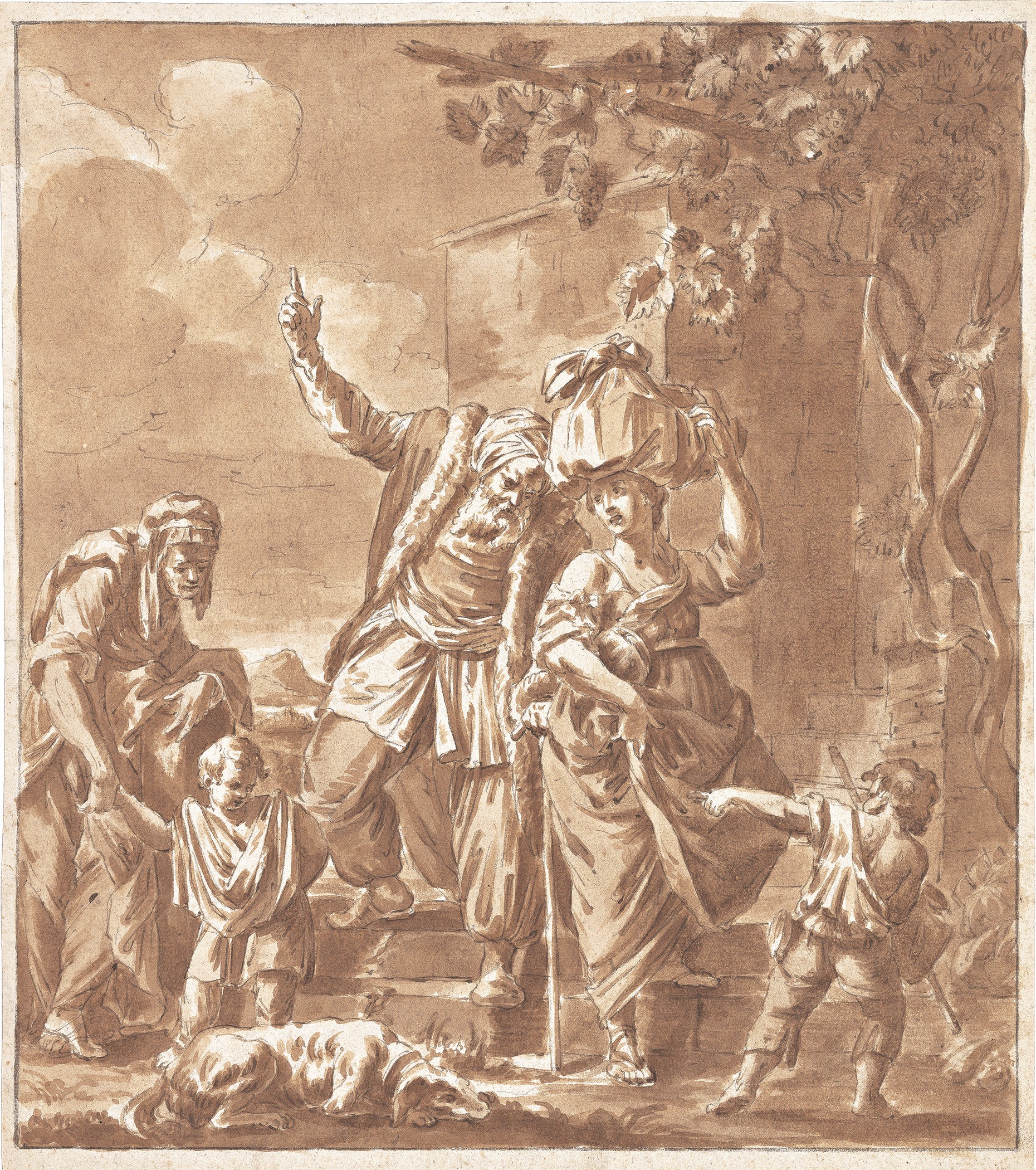Gaetano Zompini
(Nervesa, 1700 - Venice, 1778)
Testament of Moses
Pen and brush, brown ink, heightened with white, in part over black chalk, on paper
420 x 367 mm (16.54 x 14.45 inches)
Gaetano Zompini
(Nervesa, 1700 - Venice, 1778)
Testament of Moses
Pen and brush, brown ink, heightened with white, in part over black chalk, on paper
420 x 367 mm (16.54 x 14.45 inches)
Re: 0168
Provenance: Private collection, Florence
Price: € 1.800,00 - circa US $ 1.962,00
Description:In the shade of a tree in flower, at the foot of a stairway that leads up to a fort, Moses, close to death, says farewell to the people of Israel to allow his followers to enter the promised land. He couldn't enter because of a curse put upon him and his brother Aaron by God for the doubts they had during the drought of Kadesh. Moses, therefore, held up by Aaron's cane points upwards to the destination of his final journey from the steppes of Moab towards Mount Nebo, while Joseph, just a young boy on the right, who also has a long cane, points towards Canaan. Zipporah and Elizabeth are guided by Eleazar and Joseph, portrayed as young boys because they are free of the sin that forced the people of Israel to cross the desert in penitence. This drawing, probably a preparatory study for some kind of university room, can be associated with the hand of an etcher from the 1700s, Gaetano Zompini. Apprenticed to Niccolò Bambini in Venice, he later worked in the bottega of Sebastiano Ricci, trying to give his maestro's tight style a more conversational tone as preferred by Diziani1. While Zompini died isolated, in poverty and out of touch with his times in 1778, a high point in his career was the publication in 1753 of Le arti che vanno per via nella città di Venezia, a collection of forty etchings that he did that showed the lowest grade of trades, a reprisal of the series done one hundred years earlier in Bologna from drawings by Annibale Carracci2. The artist's narrative vein is surprising even today, as it is far from demeaning towards the people portrayed and its intelligence pervades, even to a lesser degree, his paintings from the previous decades. Amongst these, more than in the commissions he won for religious paintings, as for the frescoes and the ceiling of the church of San Nicola da Tolentino in Venice that have an air of the late 1600's to them, to truly evaluate his style we must consider above all the decorations he did in private residences such as the tempera paintings of biblical episodes in the Palazzo Sturm in Bassano3 or the canvases of the Stories from the Iliad, today destroyed but of which we still have photographic documentation done for Palazzo Zinelli near Rialto and later transferred to the Castello di Moschen in Poland4. On top of the paintings in Bassano, another valid confrontation for our drawing is the pair of magnificent canvases that decorate the Sala dell'Archivio in the famous Scuola dei Carmini in Campo Santa Margherita5. Very similar is the Rebecca by the Well, in which even the faces of the personages, as well as the Zompini's habit of making very clear profiles with chiaroscuro that keeps half of the figure in the dark making for a very expressive work. Levey found a preparatory study in the collection of the Duke of Bedford in Woburn Abbey of Zompini's Ester e Assuero, the second canvas consigned to the Carmini in 17486. This work attests to how for Zompini, as for Sebastiano Ricci before him, the first moment of an idea brought him to results that were at times better than the final works, that appear at times less angular and free. It is therefore in sketches like the one here in question that Zompini expressed himself better in his inventiveness and his capacity for characterization. Giuseppe Maria Pilo was certainly looking at works like this when, fifty years ago, he noted, first amongst modern art critics, that Zompini's work had a certain, "Il suo sapore asprigno d'arcadia paesana" had a tangy flavor of country Arcadia.

